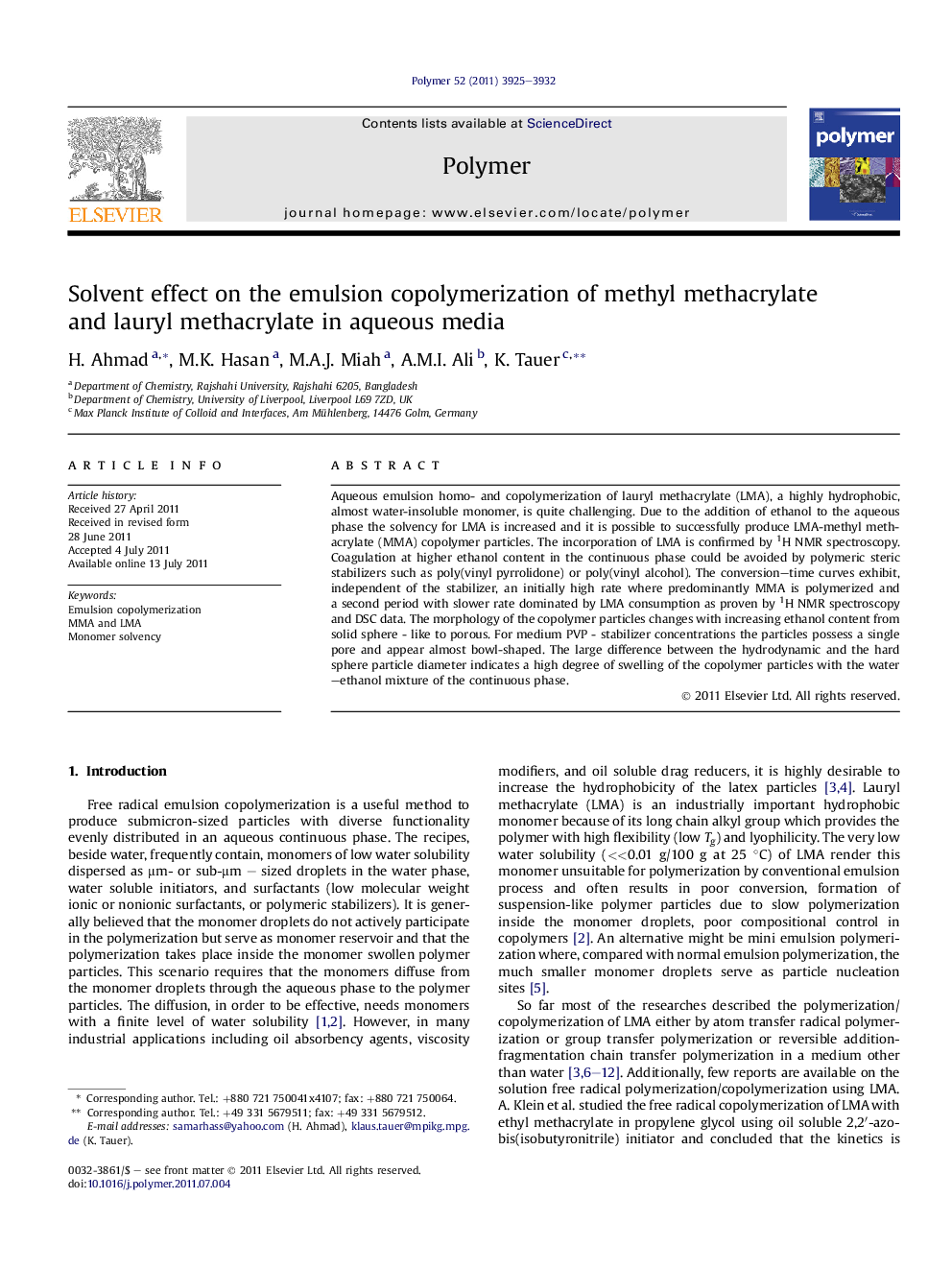| Article ID | Journal | Published Year | Pages | File Type |
|---|---|---|---|---|
| 5184452 | Polymer | 2011 | 8 Pages |
Aqueous emulsion homo- and copolymerization of lauryl methacrylate (LMA), a highly hydrophobic, almost water-insoluble monomer, is quite challenging. Due to the addition of ethanol to the aqueous phase the solvency for LMA is increased and it is possible to successfully produce LMA-methyl methacrylate (MMA) copolymer particles. The incorporation of LMA is confirmed by 1H NMR spectroscopy. Coagulation at higher ethanol content in the continuous phase could be avoided by polymeric steric stabilizers such as poly(vinyl pyrrolidone) or poly(vinyl alcohol). The conversion-time curves exhibit, independent of the stabilizer, an initially high rate where predominantly MMA is polymerized and a second period with slower rate dominated by LMA consumption as proven by 1H NMR spectroscopy and DSC data. The morphology of the copolymer particles changes with increasing ethanol content from solid sphere - like to porous. For medium PVP - stabilizer concentrations the particles possess a single pore and appear almost bowl-shaped. The large difference between the hydrodynamic and the hard sphere particle diameter indicates a high degree of swelling of the copolymer particles with the water-ethanol mixture of the continuous phase.
Graphical abstractDownload full-size image
